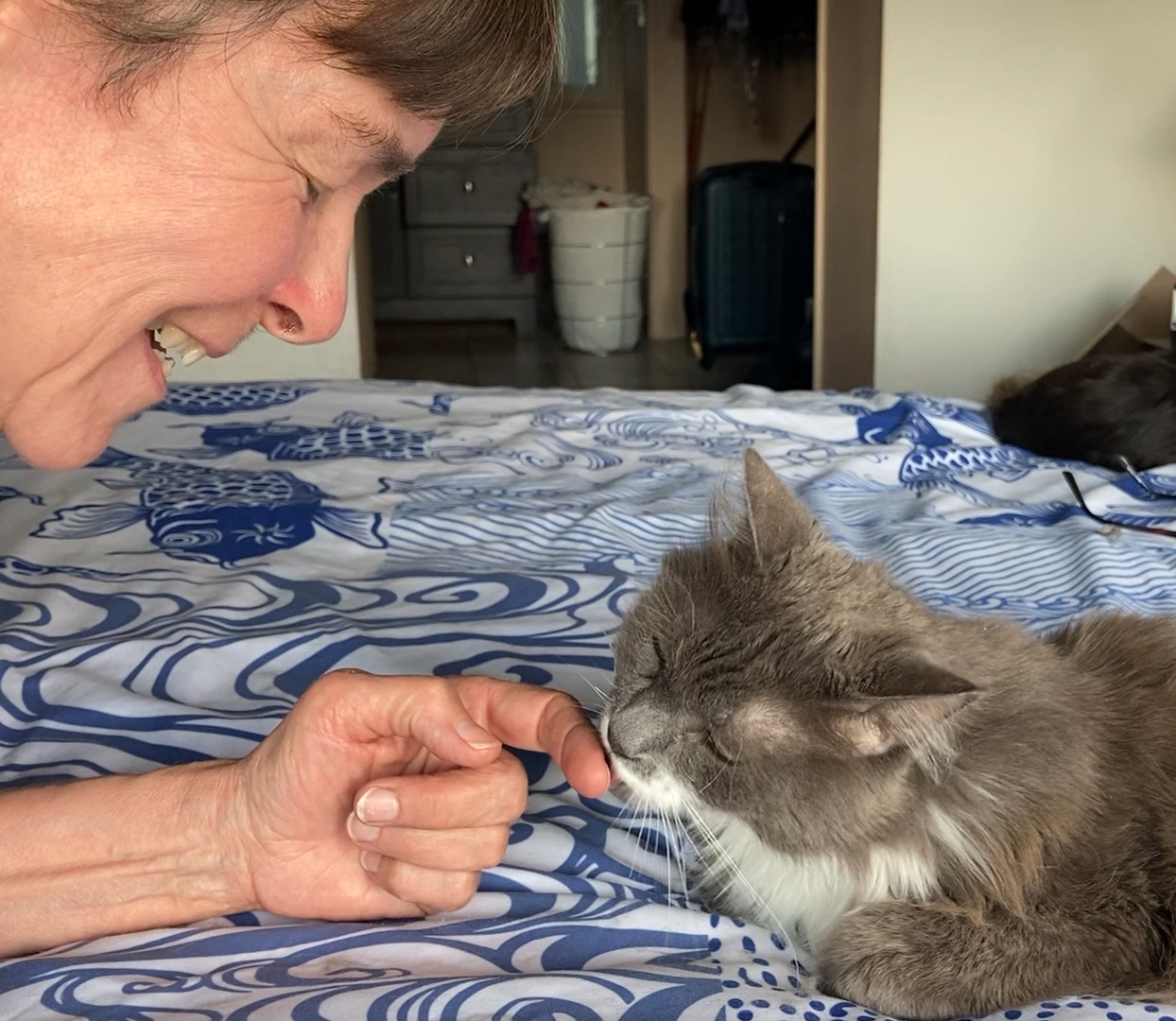
You’ve had a tough day at work – you couldn’t keep anyone happy. You arrive home and your cat is there at the door as you come in. He rubs around your legs and stands up to bump your hand with his head. Of course, he is there for his dinner but afterwards, he will snuggle up to you on the sofa to watch some TV – at least, he seems happy with you!
Your relationship with your cat is more than just providing him with food and a warm place to sleep – it is also about the comfort you get from him when you are stressed. A recent study authored by Mauro Ines and colleagues looked at the different types of relationships that exist between cats and their people. They looked at the cat-owner relationship in terms of attachment AND social support.
cat-owner relationship
attachment
Attachment refers to an emotional bond between two individuals where each feels more secure and comforted when with the other.
We not only provide our cats with food and shelter but also security and comfort. As a consequence, our cats are ATTACHED to us and stay close to us.
social support
Social Support refers to a network of family and friends that you can turn to when you are stressed or feeling isolated and lonely.
In terms of social support, our cats make us feel needed because they need us to care for them. They give us a break from the complexities of interacting with people – they are available, not judgmental or unpredictable.
Mauro Ines’ research team conducted an extensive survey of cat owners. After the dust cleared, there were 3994 “reliable” responses for statistical analysis.
The study used four categories to evaluate cat-owner relationships:
- The Owner’s emotional investment in the cat
- The cat’s acceptance of people other than the Owner
- The cat’s need to be close to the Owner
- How friendly the cat was toward the Owner
Statistical analysis of the surveys revealed 5 distinct cat-owner relationships.
In three of these relationships (52% of the surveys), owners have a low level of emotional investment in their cats. The cats and owners do not seem to be very attached nor do they offer each other much social support.
- “Open”
- Owner has a “neutral” emotional investment in the cat
- The cat typically goes outdoors
- The cat is friendly to people in general
- Cat has some affiliation with the owner.
- These cats do not seek out owners when distressed.
- “Remote”
- Owner has a low level of emotional investment in the cat
- Owner does not view the cat as part of the family.
- The cat is often be sociable with people other than the Owner
- The cat does not seek out the Owner when distressed.
- “Casual”
- Owner has a low level of emotional investment
- The cat is sociable and friendly with other people
- Little evidence that the cat discriminates the Owner from other people
- These cats may visit other households in the neighborhood
About 45% of the surveys came from Owners with a high emotional investment in their cats. These Owners scored high on items like “my cat will often lick my hands or face”. These cats and owners have stronger relationships, both in terms of attachment and social support.
- “Co-dependent”
- These cats prefer to be close to their owners
- These cats are wary of people other than the Owner
- Usually a single-person household
- The cat is indoor-only
- Owner and cat play together frequently
- “Friendship”
- Usually a multi-cat home
- These cats are often friendly with people other than the Owner
- These cats like to be near the Owner but are not “clingy”
- The Owner and cats have a “friendly” relationship but can function independently of each other.
A study like the one described above can have inherent biases that can limit its value in describing cat owners in general. For instance, the bulk of the survey responses came from women in the UK (66%). Only 10% of the responses came from US residents. In the UK, it is common for cats to have outdoor access (90%), whereas in the US, it is estimated that upward of 65% of pet cats are primarily indoors. If we were to survey cat owners in the US, would we find a greater percentage of “co-dependent” relationships? Would we find more emotionally invested owners with indoor-only cats?
This study, while interesting, is certainly not the last word in how cats bond with their people. However, it does suggest that the cat-human relationship is more than a simple caregiver- dependent relationship.
Why do a study like this?
One of the leading reasons why cats are relinquished to animal shelters is behavior problems. A better understanding of the cat-owner relationship could help resolve or possibly avoid such problem behaviors, keeping the cat in his home and improving the welfare of both cat and owner.
Want to keep up with the world of cats? Subscribe to The Feline Purrspective!

